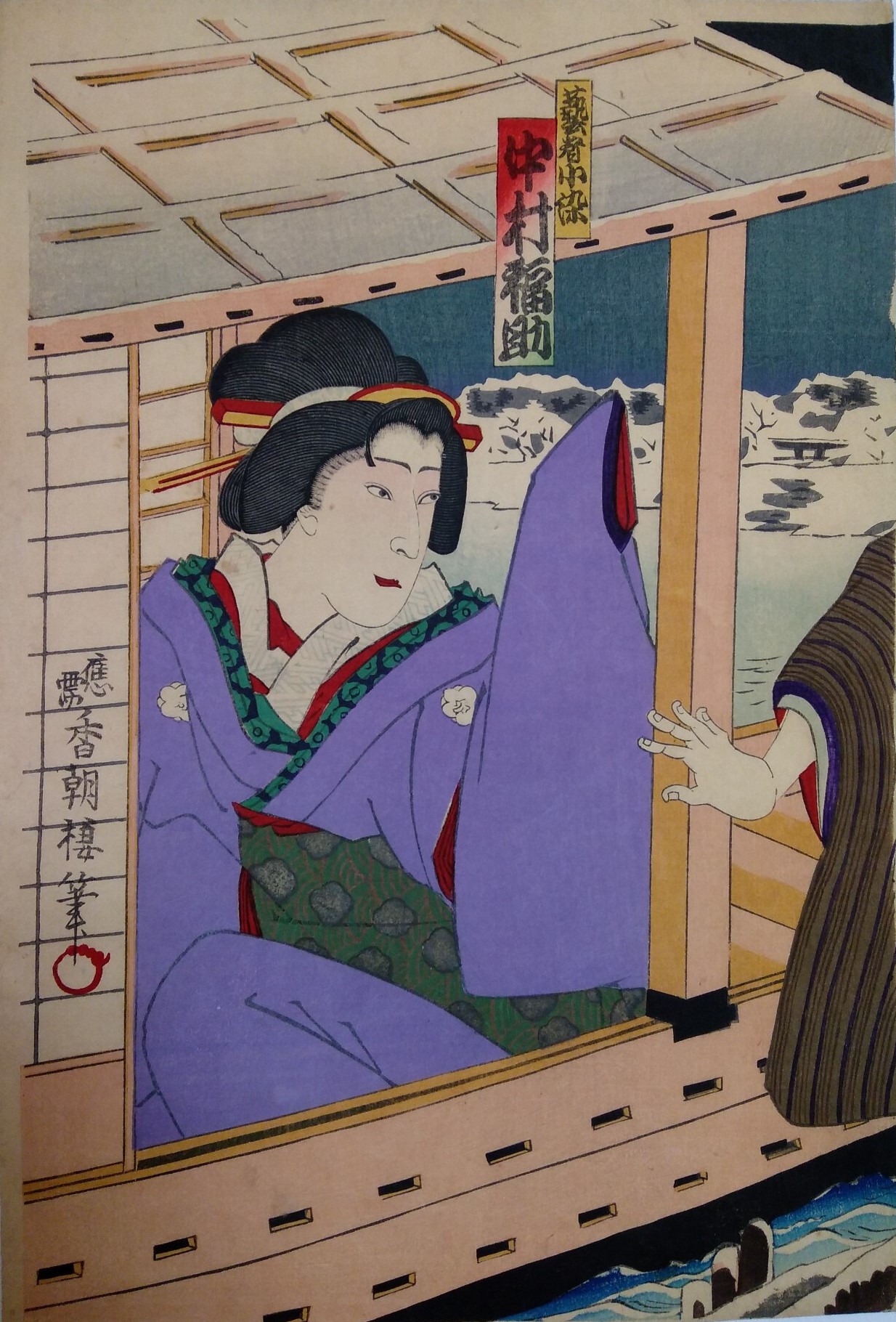Utagawa Kunisada III
1848 ~ 1920Utagawa Kunisada III, born in Edo as Hidehisa Takenouchi in 1848, was an artist from the Meiji period (1868 ~ 1912) known for his prints of kabuki actors. He initially studied under Utagawa Toyokuni III (Kunisada I)
from the age of eleven and continued his artistic training under Toyokuni IV (Kunisada II) after his teacher`s death.
His childhood name was Chōtarō and his adult name was Eikyū, while his maternal surname was Takeuchi.
Throughout his career, he changed his artistic names several times, adopting Kunimasa IV and later, in 1889, taking the name Kunisada III, following the succession line of the Utagawa school. He subsequently adopted other art names
such as Kōchōrō and Toyosai, and even attempted to use Toyokuni IV, but, since it was already claimed, he opted for Toyokuni V.
Kunisada III is mainly remembered for his bunmei kaika-e, prints depicting the modernizing Japan of the Meiji era, and yakusha-e (kabuki actors) particularly those of Ichikawa Sadanji. Besides actor prints, he also worked on book
illustrations, game boards (e-sugoroku), and other popular Meiji period genres such as senso-e (war prints).

This print shows the kabuki actor Onoe Matsusuke IV as Iijima Eizaemon in a scene taken from the drama Kaidan botan dōrō. It belongs to a triptych of which it occupies the first place from the left side.
USD$ 115.00

This print comes from a triptych inspired by the drama "Three Ansei sake cup" (Ansei mitsugumi sakazuki) held in Tōkyō for the first time in 1893 at the Kabuki theater and portrays the kabuki actor Nakamura Fukusuke who,
as onnagata, is playng the role of the Geisha Kotome.
Kotome was a Gesiha lived during the bakumatsu, a timeline extending from 1853 to 1867, the last 14 years of the Tokugawa Shogunate. It is told that on the 6th year of the Ansei era (1859) she was sailing from Uraga, nearby Yokohama in
the Kanagawa prefecture towards the Kamigata area (which nowadays corresponds to the area spreading from Kyōtō to Ōsaka) for visiting its beauties, but she was caught in storm. After having drifted for 60 long days she found hereself in the Hawai.
Haunted by a strong feeling of nostalgia but with no chance of returning home she had no choice but keep living there.
One day she met a Christian missionary named Jansee that took her to America where she converted devoting herself to a Chirstian life.
Voices and news about her life got lost after 1877.
USD$ 115.00

